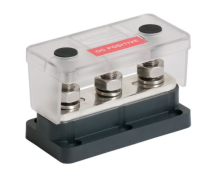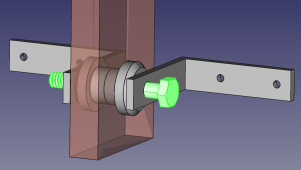Hi guys,
When dimensioning my solar project all connections, joining 2 cables into 1 or splitting up cables as well, become rather expensive. An item like this often costs like 100 USD:

And when I look at cheaper options, they often have low ratings (like 48V DC (I am not sure if they really are true, and that they would burn up if you hooked them up to 56V, but I don't know, recon that is another topic).
But getting a large copper bar is not expensive and its of course easy to cut off and make holes in them with threads for the bolts. So that takes care of the connection, right. But how do I mount that bar to the wall of my installation? In my cabin, my installation is mounted on the wall where I basically have a chipboard with paint (original board), then a little bit of air, a plyboard and finally a plaster board on it. So in theory, one could even consider if I couldn't just screw the cut off bar right onto the plaster board, but that just don't feel right.
I know that these products exists:

And I recon it might be overly cheap, but they are like 10USD a piece at Amazon, and it just seems like such an easy construction to DIY.
Have anyone a solution for how to mount a shorter piece of a copper bar on on a wall under these conditions?
When dimensioning my solar project all connections, joining 2 cables into 1 or splitting up cables as well, become rather expensive. An item like this often costs like 100 USD:

And when I look at cheaper options, they often have low ratings (like 48V DC (I am not sure if they really are true, and that they would burn up if you hooked them up to 56V, but I don't know, recon that is another topic).
But getting a large copper bar is not expensive and its of course easy to cut off and make holes in them with threads for the bolts. So that takes care of the connection, right. But how do I mount that bar to the wall of my installation? In my cabin, my installation is mounted on the wall where I basically have a chipboard with paint (original board), then a little bit of air, a plyboard and finally a plaster board on it. So in theory, one could even consider if I couldn't just screw the cut off bar right onto the plaster board, but that just don't feel right.
I know that these products exists:

And I recon it might be overly cheap, but they are like 10USD a piece at Amazon, and it just seems like such an easy construction to DIY.
Have anyone a solution for how to mount a shorter piece of a copper bar on on a wall under these conditions?



